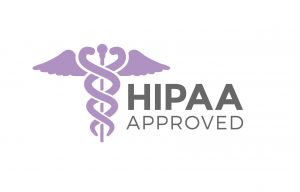In order for value-based care to take hold of the U.S. healthcare system, alternative payment models (APMs) must replace the traditional fee-for-service payments that healthcare has used for years.
APMs, along with the Merit-based Incentive Payment System, is one of the approaches that provides added incentive payments to providers who deliver high quality, cost-efficient care. Advanced APMs track the quality payment program that allow providers to earn additional payments for taking on more risk in terms of the patient’s health outcome.
Recent reports suggest that is happening, albeit slowly. A 2017 report from the Health Care Payment Learning & Action Network (LAN) surveyed 80 participants that cover around 245.4 million insured Americans, around 84% of the covered population. The report said that 29% of total U.S. healthcare payments were tied to APMs in 2016 compared to 23% in 2015. The goal for LAN is to see that number rise to 50% by the end of 2018.
But the accuracy of these numbers is questionable, according to an article from Health Leaders Media. The phrase “tied to APMs” can be misleading said Sean McSweeney, founder and president of Apache Health.
“While it is likely true that payments tied to APM were in the range of 29%, this still only represents a low single-digit percent of reimbursement,” he told Health Leaders. “For example, 29% of payments may have had a bonus or reduction associated with the payment of 4% to 9%. Therefore, 29% of 4% is approximately 1.1%. This illustrates how this report might be misleading. The report appears to make it much larger.”
More Access to Data is Needed
The role of informatics in APM efforts is significant.
Creating systems where health data flows freely and can be shared across providers and platforms is the foundation that must be laid for APMs to succeed. According to an article from Health Data Management, the Physician-Focused Payment Technical Advisory Committee (PTAC) advised Congress late last year that greater access to shared data is a common barrier for providers.
“Most of the proposals PTAC has received require coordination of care across practices, providers and communities, but if data is not shared effectively, participants cannot coordinate patient care across episodes or populations,” Elizabeth Mitchell, PTAC’s vice chair told lawmakers. “We ultimately must address the barriers to community wide data access in order to enable the successful transition to APMs.”
The technology aspect of it plays an important part, but with policy developments concerning information blocking, trust frameworks and data standards, all the pieces are in place for information to begin flowing. The barriers, Mitchell noted, are not technology related, but “business or otherwise.”
Making the Most of Data
The other aspect of successful APM adoption is the collection and use of data. Insights that better inform risk assessments, cost benefit analysis and performance metrics that can save money and improve care are going to come from a healthy data analytics ecosystem.
The American College of Cardiologists has provided a review that a medical practice can conduct of their analytics capabilities to see if they can succeed with APMs. It includes:
- Optimized use of certified EHR technology
- Development and use of registries from EHRs, claims and national registries
- Ability to combine EHR, claims and payer provided data for quality and cost insights
- Ability to access and analyze data from EHRs to establish areas for performance improvement
Performing these tasks falls under the core operations of health value management, which requires “ongoing provider alignment using advanced analytics, data sharing and consumer engagement driven through emerging risk bearing reimbursement arrangements,” according to a paper titled “The Business of Managing Health Over Healthcare for Health Plans” on the Healthcare Conferences website.
When it comes to Medicaid, payment models are evolving to incorporate more financial risk and meaningful use of EHRs to qualify as advanced APMs. According to a report from Deloitte, this requires new or additional investment in technology and data analytics tools.




